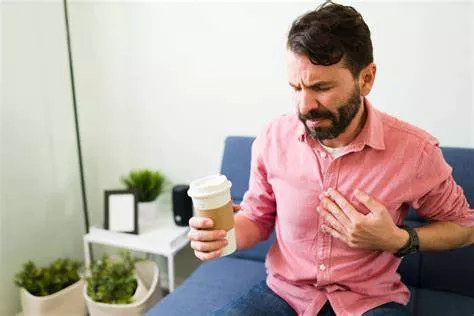Coffee is one of the most popular beverages worldwide, enjoyed by millions for its rich flavor and stimulating effects. However, some people experience chest pain after drinking coffee, which can be concerning. This article explores the potential reasons behind this discomfort, drawing on coffee expertise and scientific research.
Understanding Coffee’s Composition
Caffeine Content
Caffeine is the primary active ingredient in coffee. It stimulates the central nervous system, increases heart rate, and can cause blood vessels to constrict. For some individuals, these effects may lead to chest pain.
Acidity Levels
Coffee is naturally acidic, with a pH ranging from 4.85 to 5.10. High acidity can irritate the esophagus and stomach lining, potentially causing discomfort that radiates to the chest.
Potential Causes of Chest Pain After Drinking Coffee
Gastroesophageal Reflux Disease (GERD)
GERD is a condition where stomach acid flows back into the esophagus, causing irritation and pain. Coffee can relax the lower esophageal sphincter, the muscle that prevents acid reflux, leading to symptoms like chest pain.
Heart Palpitations
Caffeine can cause heart palpitations, an irregular or rapid heartbeat. This sensation can be uncomfortable and may be perceived as chest pain, especially in individuals sensitive to caffeine.
Anxiety and Stress
Caffeine is a stimulant that can exacerbate anxiety and stress. High levels of anxiety can manifest physically, including chest tightness or pain, particularly in those prone to anxiety disorders.
Muscle Tension
Caffeine can increase muscle tension, including the muscles around the chest. This tension can lead to discomfort or pain, especially if the individual is already experiencing stress or poor posture.
Allergic Reactions
Though rare, some individuals may have an allergic reaction to components in coffee, such as proteins or additives. Symptoms can include chest tightness, difficulty breathing, and pain.
How to Mitigate Chest Pain After Drinking Coffee
Reduce Caffeine Intake
Limiting the amount of caffeine consumed can help reduce the risk of chest pain. Opt for decaffeinated coffee or beverages with lower caffeine content.
Choose Low-Acidity Coffee
Selecting coffee with lower acidity can minimize irritation to the esophagus and stomach. Look for brands that specifically market low-acidity options.
Monitor Portion Sizes
Drinking smaller amounts of coffee can help prevent overstimulation and reduce the likelihood of chest pain. Consider having a smaller cup or diluting your coffee with water or milk.
Stay Hydrated
Caffeine is a diuretic, which can lead to dehydration. Ensuring adequate hydration can help mitigate some of the negative effects of caffeine, including chest discomfort.
Practice Relaxation Techniques
Engaging in relaxation techniques such as deep breathing, meditation, or yoga can help manage anxiety and muscle tension, potentially reducing chest pain.
Consult a Healthcare Professional
If chest pain persists or is severe, it is essential to consult a healthcare professional. They can help determine the underlying cause and recommend appropriate treatment.
Conclusion
Chest pain after drinking coffee can be caused by various factors, including caffeine’s stimulating effects, coffee’s acidity, and individual sensitivities. By understanding these potential causes and taking steps to mitigate them, individuals can continue to enjoy their coffee without discomfort. However, persistent or severe chest pain should always be evaluated by a healthcare professional to rule out more serious conditions.
Related topics:
Lost Coffee Celebrates 14 Years of Brewing Community in Castle Rock
Peet’s Coffee to Eliminate Non – Dairy Surcharge at 280 US Spots
JDE Peet’s resolves pricing conflicts with key European supermarkets


